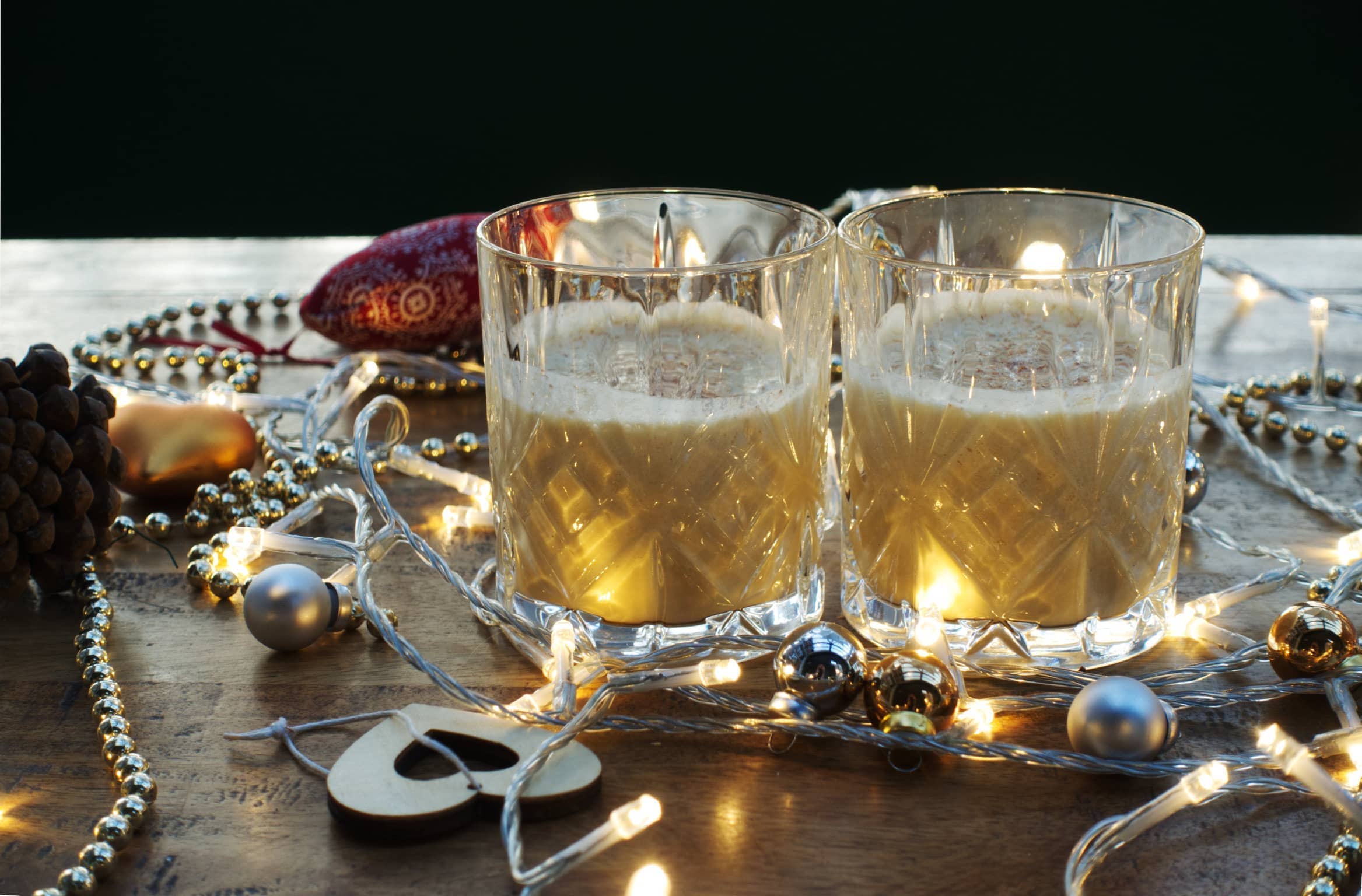There are all sorts of things we’re prepared to do once December rears its head, that we’d absolutely turn our noses up at in a less festive month: back to back parties, kitsch decorations, adding spices to anything that stands still long enough, engaging with relatives we normally avoid. And there are certain foods and drinks which would seem bizarre at any other time of the year, but we heartily embrace once there’s some tinsel swinging around, and chief among them is eggnog.
Perhaps it is its rich, indulgent nature that means we only countenance it around Christmas, its spiced nature, or simply its surprisingly high alcohol content. Essentially a boozy, drinkable custard, eggnog is made from cream and milk, egg yolks, sugar whisked egg whites, and alcohol. It can be made with any dark, strong booze: I’ve gone for rum, as I love its sweet, slightly spicy smokiness, but brandy, sweet sherry, madeira, or bourbon are all common choices. Nutmeg is usually found in the custard base mixture, as well as being freshly grated on top of the served drink.
While the ‘egg’ of the name is fairly self-explanatory, it’s not entirely clear where the ‘nog’ comes from. The two strongest contenders for etymological origins are the 17th century word used for strong beer in Norfolk, or from the Middle English word ‘noggin’ which was the name of a small wooden cup used to serve alcohol. Either way, the drink itself really comes from the Medieval posset: hot, spiced milk, to which wine or ale was added to curdle, thicken and flavour, and often administered as a cold and flu remedy.
Later, eggs were added to the mix, and by the seventeenth century all sorts of flavourings were being used, including ambergris and animal musk (I’ve decided not to use these in my recipe, you’ll be happy to hear). In the seventeenth century, the drink became popular in the British colonies, and rum became the standard alcohol in American eggnog concoctions, as brandy and whisky were heavily taxed.
George Washington was, supposedly, a big fan of eggnog, serving it to his guests, and using a mix of whisky, rum and sherry. If the recipe touted to be his is to be believed, he also aged the drink, making it several days in advance of serving it, and letting it rest.
Some eggnog evangelists have gone several steps further, ageing the drink for literal years. If you fancy trying eggnog the George Washington way, don’t be disconcerted by the aging process. The amount of rum in the recipe will stop the drink spoiling (although do keep it in the fridge), and scientists experimenting in 2009 found that, providing you use enough of a sufficiently strong booze, after three weeks, the alcohol content will actually kill any residual bacteria. The aged drink is smoother, more cohesive, more complex than the fresh version – although, personally I’d probably cap it at a few days.
The drink will thicken as it rests, so do give it a good stir before you serve – and I prefer to add the whisked egg whites just before serving, to ensure the floofiest, lightest drink, and to prevent any graininess or separation.

Eggnog
Makes: 1.5 litres of eggnog (serves 10)
Takes: 15 minutes, plus chilling
Bakes: No time at all
600ml whole milk
1 vanilla pod
Freshly grated nutmeg, to taste
300g single cream
6 eggs, divided
350g dark rum
150g caster Sugar
- Split the vanilla pod in two with a sharp knife, and scrape out the seeds inside.Place the milk in a large saucepan, and add the vanilla pod, the seeds, and a generous grating of nutmeg. Heat the milk until it starts steaming, then turn off the heat and leave to infuse for 30 minutes.
- Reheat the milk and cream until it begins to steam again. Whisk together the sugar and egg yolks until pale and thick. Stream in a little of the hot milk, whisking it into the egg yolks and sugar. Keep adding the hot milk until the mixture is a pourable consistency, then return it to the rest of the milk in the pan.
- Heat the mixture very gently, stirring the whole time, and scraping the bottom of the pan with a spatula, until the custard coats the back of a spoon.
- Pour the custard through a sieve into a jug or large bowl, add the rum and cream, place clingfilm over the surface of the custard and leave to completely cool. If you want to age or rest your eggnog for a new days, leave it in the fridge.
- When you’re ready to serve, whisk the egg whites to soft peaks, then fold into the custard – you want them to be be fully combined with the custard, but without knocking all the air out of them. Serve in glasses or mugs with an extra grating of nutmeg over the top.







Comments